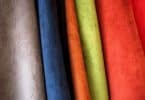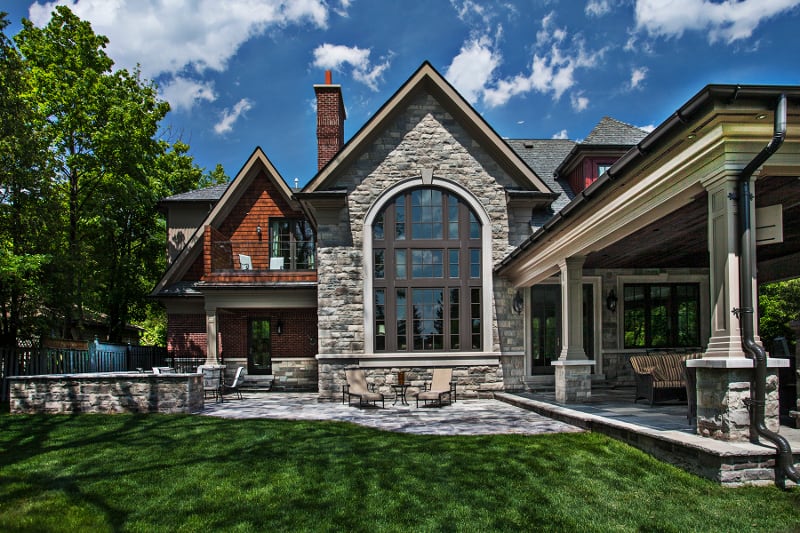
Energy Efficiency is of Equal Importance as is High-End Finishes for Award Winning Ambassador Fine Custom Homes.
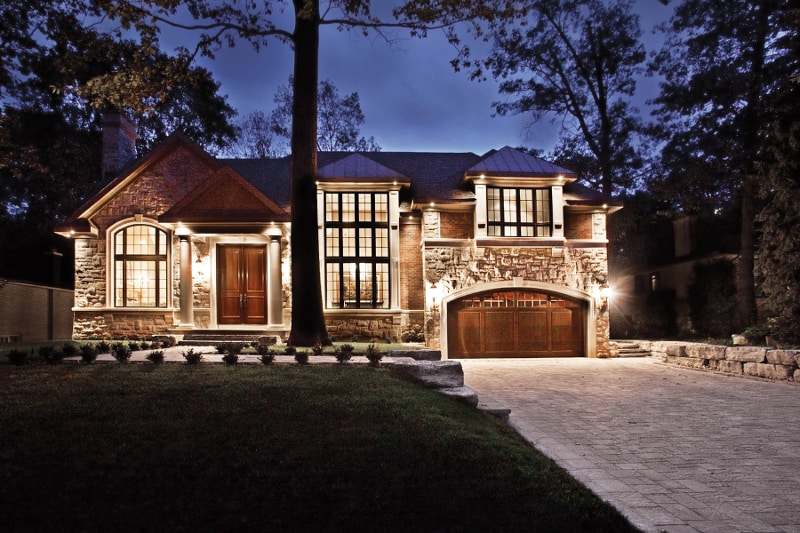
Ambassador Fine Custom Homes Inc. has won many awards for their builds, including Best Custom Home in Canada above 4,000 sq. ft. SAM Award by the Canadian Home Builder’s Association and Best Custom Home in GTA Award by the Toronto Home Builder’s Association.
When Michal J Cerny is designing an Ambassador Fine Custom Home, he spends a considerable amount of time ensuring that energy efficiencies are equally being considered as much as sophisticated interior finishes and eye pleasing exterior finishes.
“We design about 65% of the homes we build. Part of that process is consulting with the client as to what their energy efficiency needs and goals are. We coach them on a myriad of energy opportunities and work with them to make the best decisions for their family lifestyle and budget. We review the benefits of installing in-floor heating, graywater recovery systems, LED light bulbs and water proofing our foundation walls using RubberRWall. We always install hrv’s (heat recovery ventilators), HEPA and media filters, high efficiency furnaces, low flush option toilets, energy rated bathroom fans, and we encourage the client to purchase energy efficient appliances.”
Michal takes time to explain that coaching a client through the building process is educating them with knowledge about a myriad of subjects that most homeowners would not have had the time to research.
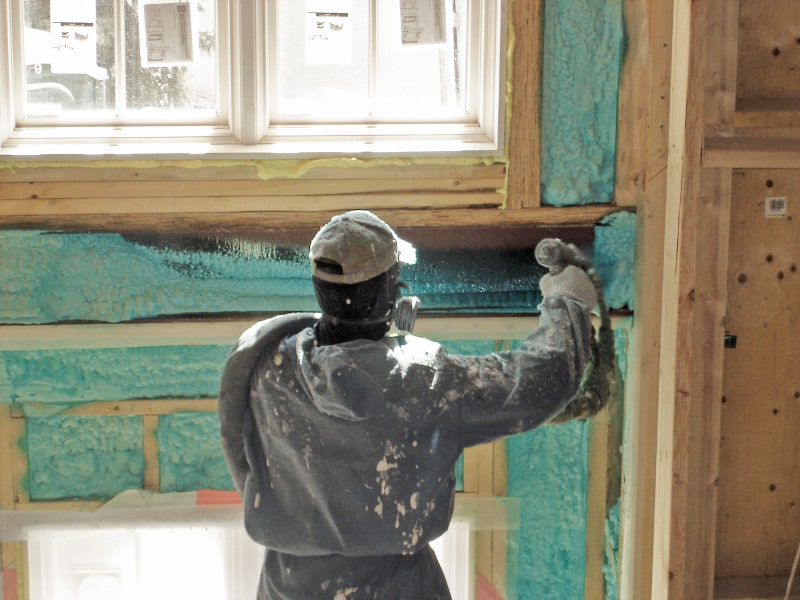
WINDOWS
“Take the subject of purchasing windows. Many homeowners like to get pricing from a couple of window installers that have done some work in the neighborhood and as long as the price is fantastically low, they assume that if someone else used them, they must be good.
Windows have more decision considerations than just deciding vinyl, aluminum, wood clad with aluminum, single/double/triple pane glass. Most people don’t consider things like U-factor and solar heat coefficient,visibility transmittance, air leakage, and condensation resistance.
Considering that a window that is a dual pane, one Low-E coating, argon has an R factor of just under R4, compared to the Ontario Building Code wall requirement between R24 – R27 pending upon efficiency of windows and furnace, homeowners should take the time to consider more than just cost in their window purchasing decision.”
He further describes that today’s windows are better designed and more insulating than products manufactured 25 years ago. New technologies such as foam-filled vinyl or fibreglass frames and sashes, low emissivity (low-e) glass, inert gas in sealed insulating glass units and improved hardware have made windows more airtight and much more efficient.
“Windows that are Energy Star certified for the climate zone in which you live (the GTA is Zone 2) – or colder – are the best energy performers of all makes and models on the mainstream market. They meet strict technical specifications for high efficiency—without compromising features or performance in other areas.
Energy Star certified windows are certified by an independent accredited agency for energy performance and insulating glass durability. These certified products often have longer warranties than conventional products. Not all window manufacturers make Energy Star windows.”

GRAYWATER RECOVERY SYSTEM
Michal is striving to implement graywater recovery systems into all of Ambassador’s new home builds effective 2016. He believes this is one of the most underutilized energy efficiency opportunities.
“In simple terms, a device captures heat from residential water, through a process often called graywater heat recovery. The incoming cold water from the city flows first through a heat exchanger where it is prewarmed by heat from graywater flowing out from such activities as dishwashing or showering. This saves money for the homeowner as the cold water from the city is pre-warmed, rather than flowing directly into a hot water tank or boiler where a lot of energy is used to heat it up. Typical household devices receiving graywater from a shower can recover up to 60% of the heat that would otherwise go to waste.
Beyond that, the graywater generated from showers, baths and sinks enters the graywater system and passes over the recover’s filter system removing fine particles from the water before it enters a holding tank. Once the bath or shower is finished, the system automatically begins the cleaning of the filter through its chlorination cycle. The water from the holding tank fills your toilet tanks and is used for the irrigation of your lawn.
As graywater contains fewer pathogens than domestic wastewater, it is generally safer to handle and easier to treat and reuse on-site for toilet flushing, landscape or crop irrigation, and other non-potable uses. As long as your clients are willing to use non toxic and low sodium soap, you can add clothes washing machines and dishwashers to the systems.
Energy savings + water conservation = money saved. A huge win for both the client and the environment!”
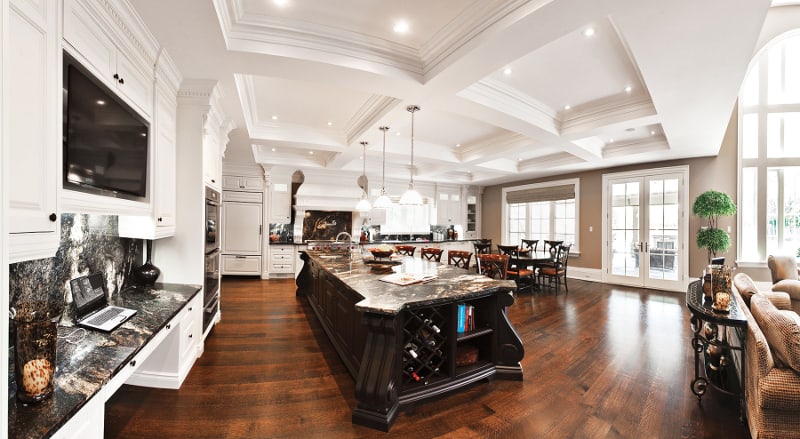
IN FLOOR HEATING
Ambassador is well known for having its award winning homes built with infloor heating. February of last year was the coldest February in Ontario history. Ambassador got feedback from their clients that their furnaces worked a few days per week during that month, while the rest of the winter their furnaces turned on only a handful of times.
“Savings will vary from home to home, but industrial statistics show estimates in the 20% to 50% savings range, pending upon geographical area lived in, efficiency of window and furnace, quality of system installed, and of course the quality of insulation.
The system operates quieter, cleaner and reduces fuel usage: Radiant heat systems have a proven record of reduced energy usage relative to other forms of heating. The savings result from several factors such as the ability to sustain comfort at lower indoor air temperatures, reduced air temperature stratification, nonpressurization of rooms (which leads to higher rates of air leakage), and the ability to operate with lower water temperatures.
Most systems are installed so that your domestic hot water is heated using the same boiler. Pending upon the spacing of radiant tubing, average temperature and flow, floor coverage and heat loss calculations, a second boiler may be required to accommodate both in-floor heating and domestic hot water heating (from past experience, homes around the 6000 sq. ft. range start to fall into this category).
Homes equipped with radiant heat systems have interior environments that are highly favorable to human thermal comfort. Unlike many systems that directly heat the air, radiant floor heating gently warms the surfaces of objects in the room as well as the air itself. The warm surfaces significantly reduce the rate of heat loss from the occupants, allowing most people to feel comfortable at room temperatures 1.5 to 2.5 degrees Celsius lower than with other methods of heating.
No more family arguments over who used up the hot water – it’s nearly impossible to run out of hot water, and the client saves on energy costs!
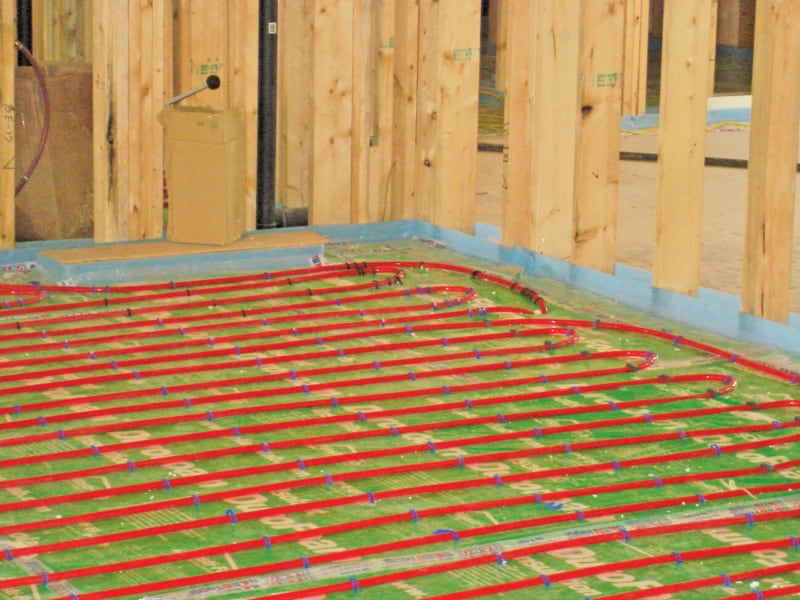
INSULATION
For the better part of the past ten years, Ambassador has had most of its clients see the benefits of using 2 lb BASF closed cell spray foam insulation throughout the house.
“We show our clients a video we shot of one of our guys trying to hammer out this spray foam after it has been installed and cured. Homeowners are in disbelief as to the inherent strength of this product.
Most people don’t realize how 2 lb spray foam insulation can provide structural enhancements to the house and assists in keeping studs to remain in the same installed condition as compared to being affected by humidity and temperature swings in the home. It actually hardens to the point that it becomes part of the building envelope in more than purely its insulation intended use.
We typically fill wall cavities with about 5.5 inches giving a final insulation factor of about R33 once the refrigerant gas has escaped from within the cells. Imagine what a difference this made with the now revised 2012 Ontario Building Code, wall insulation ratings in the GTA were R20. Even with the new 2012 OBC increased ratings between R24 and R27 pending upon efficiency of windows and furnace, we are still delivering a better finished product to the client.”
When Ambassador builds a home for a client, they are equally concerned about the life time cost of the build as they are with the direct cost of the build. Meaning, they use maintenance friendly materials that will save the client money in the long run. A simple example is they encourage the client to use stone, brick, limestone, as opposed to stucco that will fade or crack over time and require maintenance, which will cost the client more money over time.
“Not all lifetime cost of the build savings can be seen during the actual build. For example, the electricity used over the lifetime of a single incandescent bulb costs 5 to 10 times the original purchase price of the bulb itself. How does this really affect the cost to the client? An LED bulb will last approximately 50,000 hours vs. 1,200 hours that a typical incandescent light bulb will. Yes it costs about $36 vs. $1.25, but here is the savings – your energy cost over 50,000 hours of usage – LED will cost you about $86 vs. incandescent $352. Now use a multiple of some 150 pot lights in a typical sized home we build. That’s a savings of some $52,000!



Latest posts by Canadian Home Trends (see all)
- Dining Room Design Tips - December 8, 2025
- Practical Luxury in Forest Grove - December 8, 2025
- The Hidden Value of Great Design - December 8, 2025

